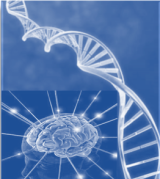Towards a cure for epilepsy

1% of world population suffers from epilepsy. The most common cause of intractable focal epilepsy are focal cortical dysplasias. Focal cortical dyplasias are groups of abnormal and disorganized cells that are present in the brain and arise during fetal brain development. When it is possible, surgical resection of the focal cortical dysplasia is performed and can cure the seizures. Recent breakthroughs have shown that somatic mutations (i.e. mutations that arise during fetal development are present in only a subset of cells) are responsible for many focal cortical dysplasias. To date, these mutations have been found in genes of the mTOR pathway. This is exciting as specific medications targeting this pathway already exist.
Many questions remain unanswered. How many patients have somatic mutations in these genes? In which cells are these mutations located and what is their impact? How do these mutations result in such intractable epilepsy? How are these mutations correlated with the changes on MRI or histological abnormalities? Our studies will ultimately lead to improved understanding of the causes of epilepsy, optimized surgical management and novel targeted medical treatments.
Untangling Mirror Movements

Congenital Mirror Movements are involuntary movements on one side of the body that mirror voluntary ones. For example, when an affected individual open and closes their right hand, their left hand will mirror the same movements involuntarily. Congenital mirror movements mainly affect the fingers and hands, but may also involve the forearms and toes.
Mirror movements result from miswiring of the motor tracts of the nervous system, and are thus considered a disorder of axonal guidance. The first gene identified to cause congenital mirror movements is DCC (Srour et al, Science 2010), which encodes a protein that is essential for the guidance of axonal fibers to the midline of the nervous system. Since then, several other genes responsible for mirror movements have been discovered (RAD51, NTN1), but the majority of individuals with mirror movements do not have an identified genetic cause.
The impact of DCC mutations beyond mirror movements is not known. What affect do DCC mutations have on gait? Is DCC important for the wiring of other tracts, such as those at the sensory system? What are the other genes responsible for mirror movements?
By studying the physiological, molecular and genetic mechanisms of congenital mirror movements, we will understand normal mechanisms of brain development and wiring and decipher the pathological mechanisms of more severe disabling disorder of axonal guidance.
Genetics of Congenital Brain Malformations
The etiology of many congenital structural brain malformations remains unknown, despite comprehensive clinical genetic testing. One of our lab’s main focus is to study the genetic basis of unexplained structural brain malformations. These include:
- Cerebellar malformations
- Corpus callosum anomalies
- Disorders of neuronal migration and cortical development
- Cerebellar malformations
- Corpus callosum anomalies
- Disorders of neuronal migration and cortical development